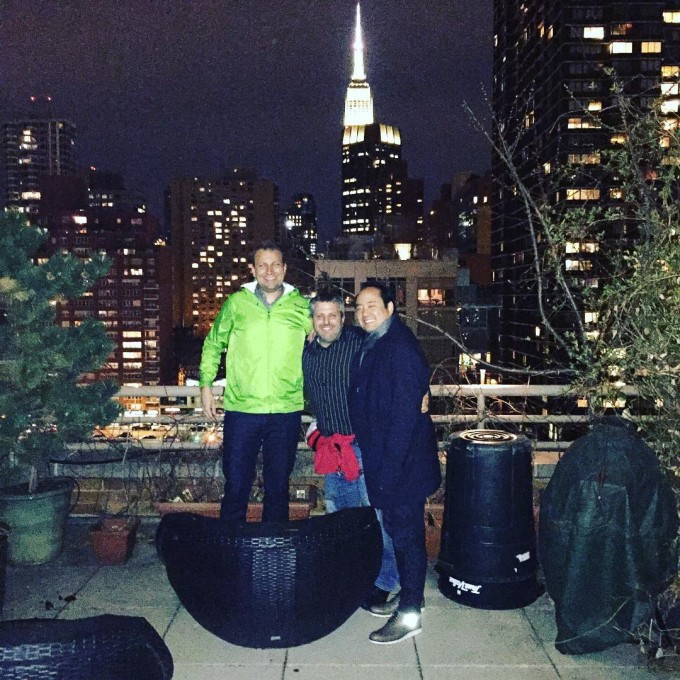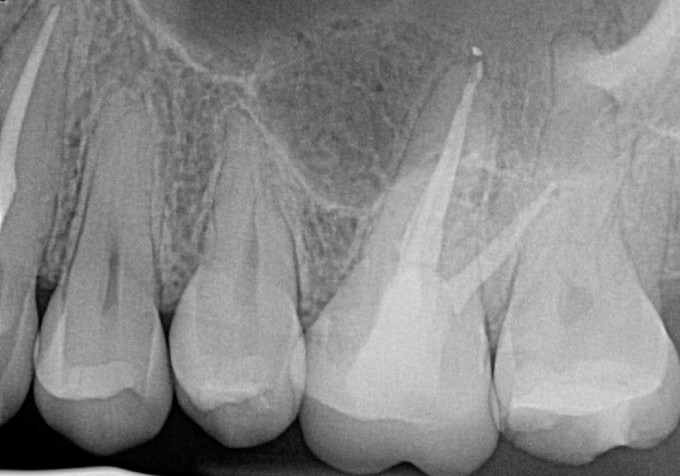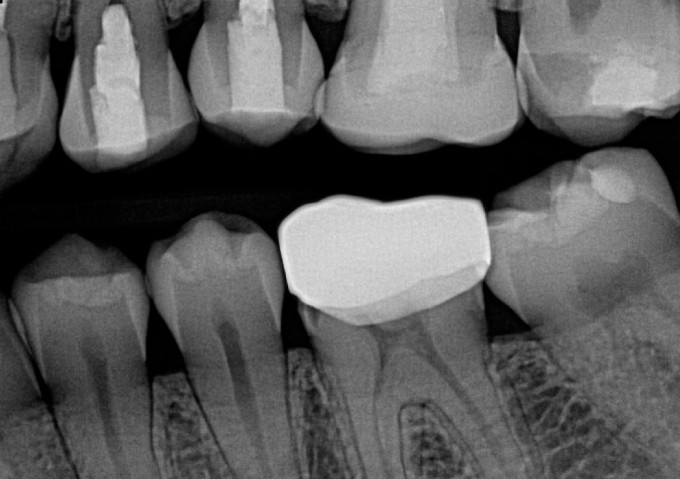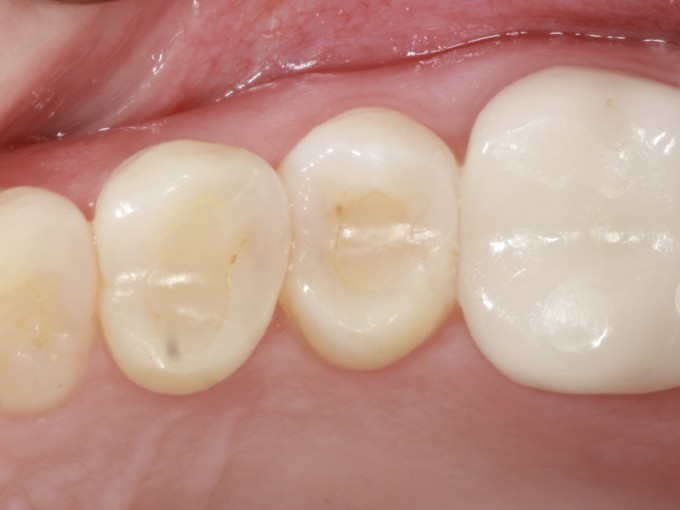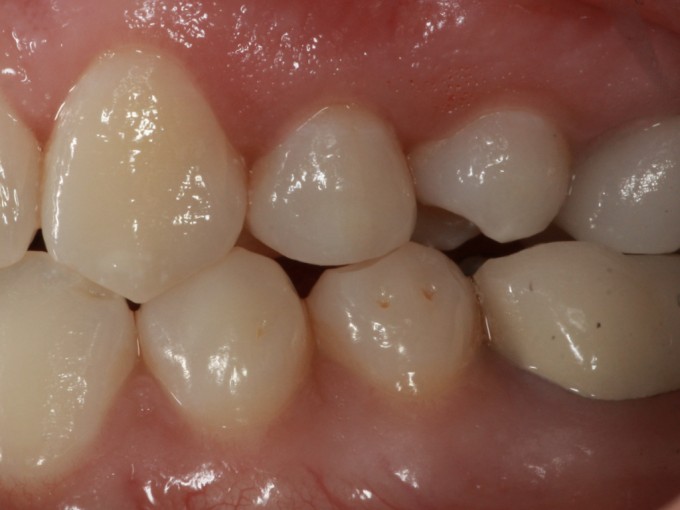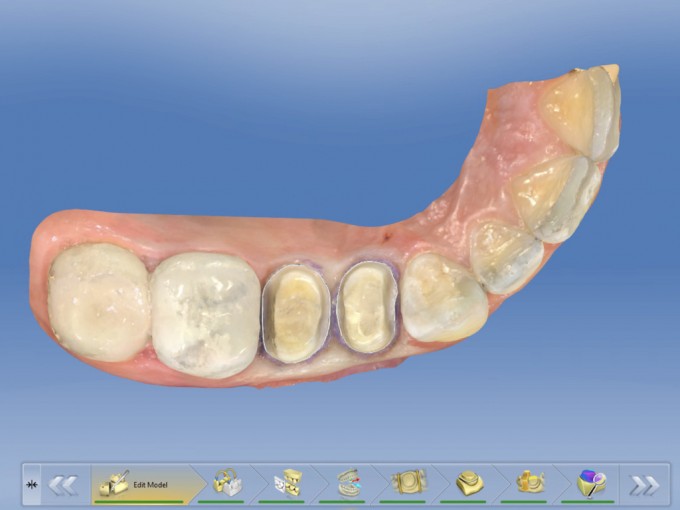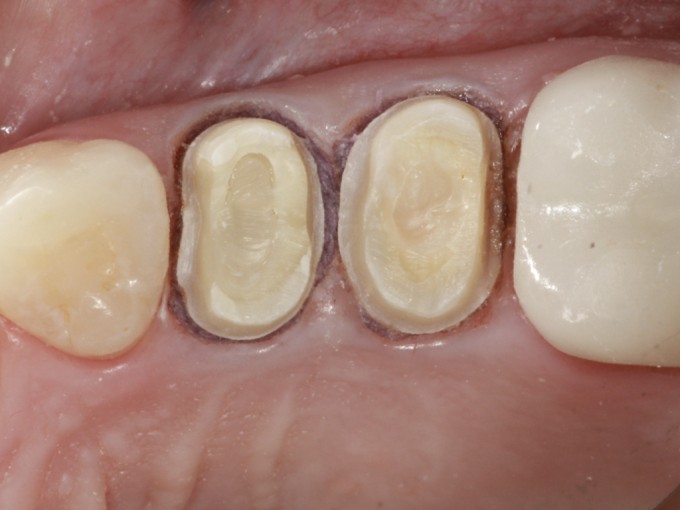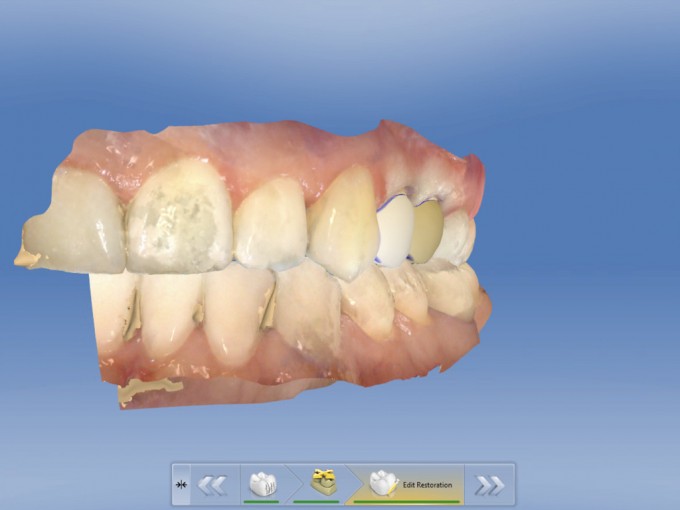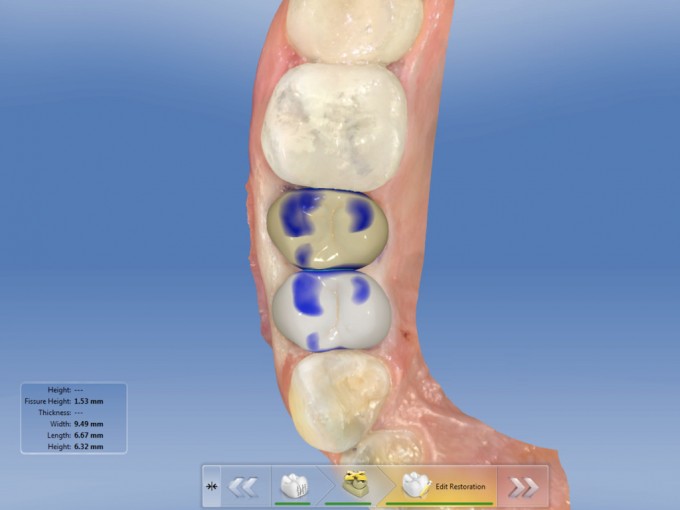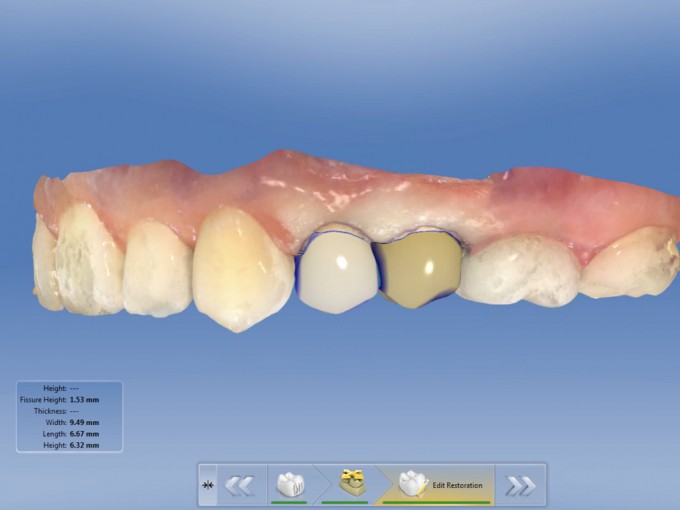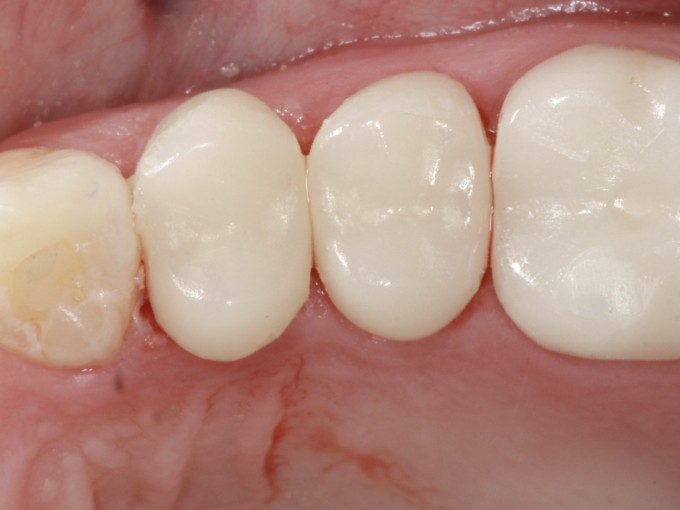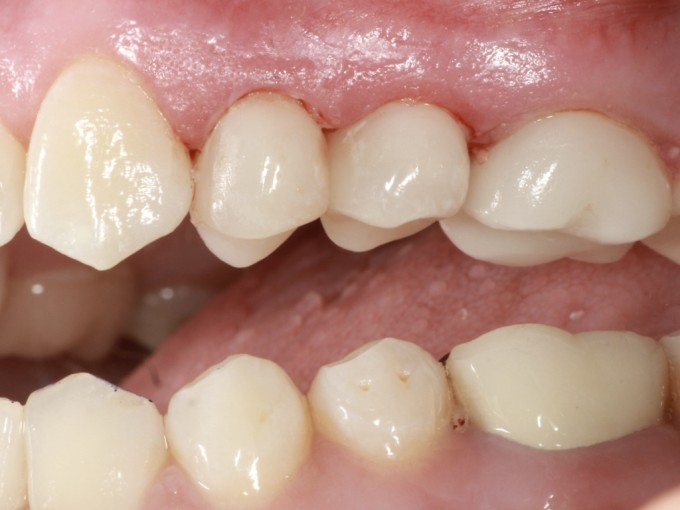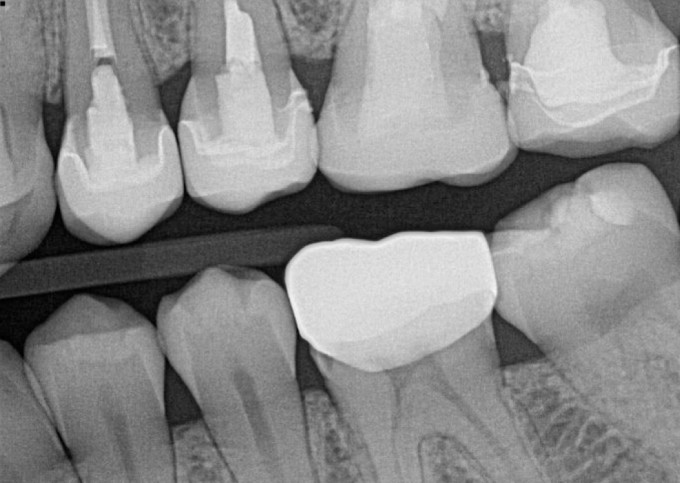CEREC one-visit efficiency to the rescue
This case represents how vital an efficient workflow can be when managing our patients. The patient presented initially with diffuse symptoms in the upper left quadrant. She reports a history of fibromyalgia and Ehlers Danlos syndrome. She has an extensive dental history, many times with significant post-operative discomfort following treatment. The patient reported sporadic pain that would vary in intensity, sometimes with no stimulation. CBCT showed no signs of periapical or radicular disease and the diagnostic testing was inconclusive. Due to the subjective and objective data giving no clear reason for her pain, I referred the patient was referred to an endodontic colleague for evaluation.
After consultation, root canal therapy was completed on both #12 and #13 and the patient was returned to my care. Because of the patient’s history with difficulty following dental treatment, I requested the endodontist fill the access openings with core build up material which reduced the number of visits and limited the patient management complications following her first stage in treatment. I also waited 8 weeks prior to initiating full coverage crowns as final restorations. The following outlines my workflow meant to maximize efficiency and speed without sacrificing quality.
Anesthesia was delivered and while it took place, I completed my pre-operative imaging. 5 minutes later, the Isolite was in place and I began prepping. Prep design was fairly straightforward, with a full coverage traditional style preparation to ensure adequate strength to the endodontically treated teeth. Retraction cord was packed around the preparations to displace the tissue and I started imaging 30 minutes into our appointment.
Since these teeth had only occlusal access resins, I was able to be very conservative with the preparations circumferentially. Yet, because irritation to the pulpal tissue was not a concern, I was able to reduce enough occlusally to obtain adequate thickness. Utilizing a material that does not require firing is a great way to keep the appointment moving along in an efficient way. As the models finished processing, I was deciding which material I wanted to use.
To me, this is the ideal case to use Celtra Duo polished only and bonded without a firing step. I obtained > 1.5mm of ceramic thickness which will provide more than adequate strength to the restoration. I prepared very thin margins along the facial aspect of the preparations, which typically requires bulking out the ceramic with many materials to avoid chipping. However, due to Celtra’s milling characteristics, I felt comfortable with ceramic thickness of 0.6mm and experienced no chipping whatsoever. At this point my design is done and sent to the milling chambers and we are 40 minutes into the appointment.
The manufacturing process took less than 9 minutes total and I got to listen to the sweet stereo sound of dueling MCXL milling chambers fabricating the crowns. Polishing the restorations to a high shine, which gives Celtra fantastic strength in addition to its wonderful appearance, took another 5 minutes. Try in and preparation of the ceramic was another 5 minutes and we were ready to bond in place. The internal surfaces of the crowns were prepared with HF etch and silanated. The crowns were then bonded using Dentsply Prime and Bond Elect with Calibra Ceram. The excess was cleaned away, occlusion verified, and a bitewing taken to verify no remaining cement, and the patient was dismissed 1 hour 15 minutes after starting anesthesia.
In this case, time was of the essence. Our patient had experienced clinical open lock, TMD symptoms, and overall pain after some of her previous dental visits. Having the ability to finish two full coverage crowns in this amount of time was huge benefit to the patient, a good use of my chair time, and a profitable procedure for the practice. When I have these types of cases, I will be sure not to double book myself in another chair at the same time. I want to devote the time needed to ensure the visit happens in an efficient manner.
Great work JP. Thanks for sharing. Like you mentioned, I love the fine/thin margins you are able to do with CeltraDUO without having to worry about chipping. Plus the quick work flow when polishing (no firing needed) comes in handy much more then you'd think.
Very cool. Got a few questions:
Bio individual?
Was #13 not in occlusion pre op, or does it just look that way?
When was #15 treated w RCT and Crown during this?
Thx
Nice work JP! Love how you show the importance of knowing your dental materials to aid in efficiency and great outcomes!
On 2/6/2018 at 8:20 pm, Jake Skowronski said... Very cool. Got a few questions: Bio individual? Was #13 not in occlusion pre op, or does it just look that way? When was #15 treated w RCT and Crown during this? Thx
Biogenetic individual yes
if you look at the pre-op photo of the bite you can see what 13 looks like in occlusion. I changed the size slightly so she would be touching
Couldn’t tell you exactly when 15 was done just that it happened in the midst of all this. This poor girl is a disaster
Nice case and presentation John.... I would hated to be the one dx endo pathology on those teeth... I would have expected to see some other dental pathology, but you did right by her in your treatment... nice!
Mark


